History of the Piaggio P-166
The Piaggio P-166 is a versatile twin-engine utility aircraft that has played a significant role in both civilian and military aviation since its inception in the late 1950s. Developed as an evolution of Piaggio’s earlier P-136 amphibian, the P-166 was designed to meet a variety of operational needs, from rough airstrip operations to maritime patrol and photo reconnaissance.
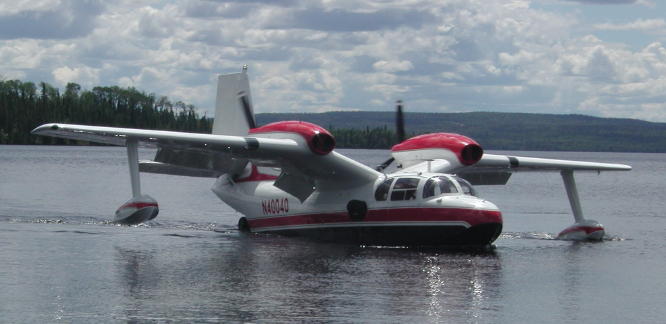
The Piaggio P-136 Gull, the predecessor to the P-166. This photo was taken while the previous owner, Donald C. Albin was taxiing the Gull. The Gull has since been sold to new owners.
Development and Initial Versions
The P-166 evolved from Piaggio’s earlier P-136 amphibian, a successful aircraft known for its versatility and ability to operate from both land and water. Recognizing the need for a more specialized land-based utility aircraft, Piaggio engineers began reworking the P-136 design, retaining the high-wing configuration and twin-engine layout but focusing on creating a more rugged airframe suitable for rough airstrips. This shift marked the transition from the amphibious capabilities of the P-136 to the all-terrain functionality of the P-166, setting the stage for its diverse roles in military and civilian aviation.
The P-166 project began with the creation of three prototypes, each powered by 340 hp Lycoming GSO-480-B1C6 engines. These early models served as the foundation for what would become a highly adaptable aircraft family. The P-166 made its first flight on November 26, 1957, at the Villa d’Albenga airfield near Genoa, Italy.
The first production version, known as the P-166AL1, retained the 340 hp Lycoming engines and was designed to accommodate two pilots and up to six passengers. A total of 29 of these aircraft were built, demonstrating the model’s initial success as a light utility aircraft capable of operating from rough airstrips, including gravel and grass.
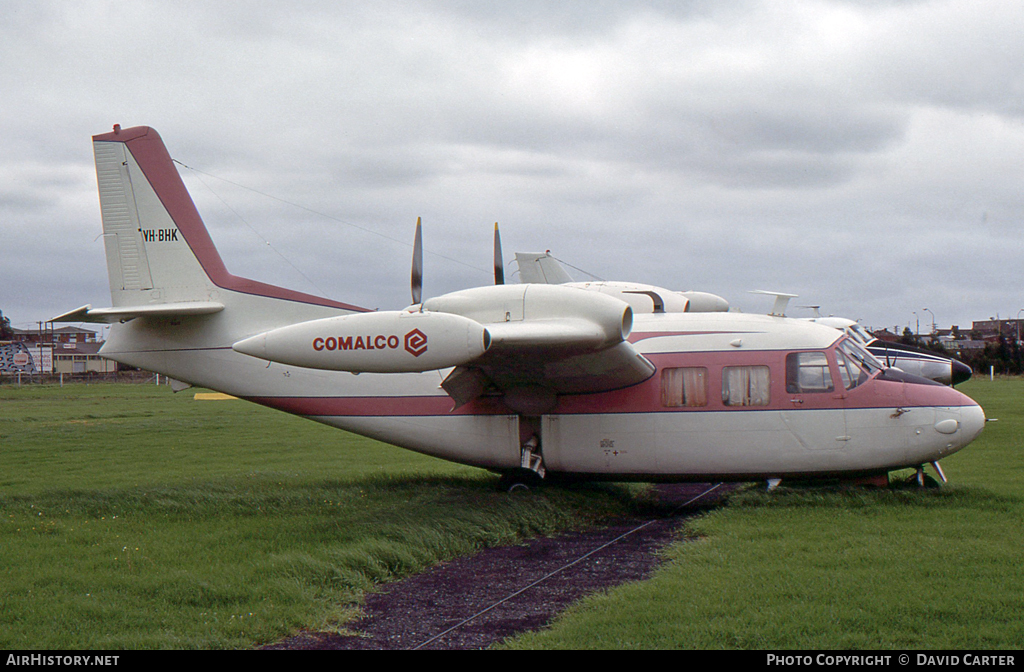
P-166 AL1 VH-BHK (Cons #370) in service of Comalco, an Aluminium Producer in Australia. Photo: David Carter via airhistory.net
The P-166B “Portofino” was a more powerful and slightly modified version of the original, featuring a longer nose and upgraded to 380 hp Lycoming IGSO-540-A1C engines. However, only five units of this variant were produced.
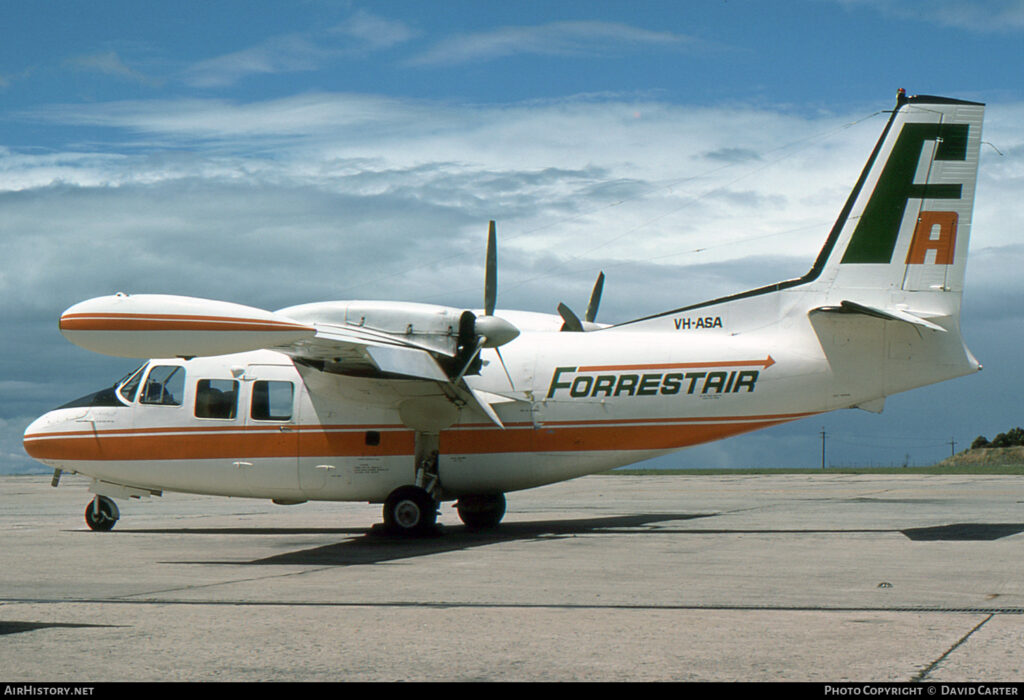
P-166 B VH-ASA (Con# 409 ) . Photo: David Carter via airhistory.net.
Military Adaptations and Special Variants
The Italian Air Force, in search of a new light utility aircraft, required that the P-166 be capable of transporting a spare engine for the Fiat G91 jet, facilitating engine replacements “in the field.” This requirement led to the development of the P-166M, a military variant specifically equipped to carry the G91 engine, thereby enhancing the aircraft’s role in military logistics.
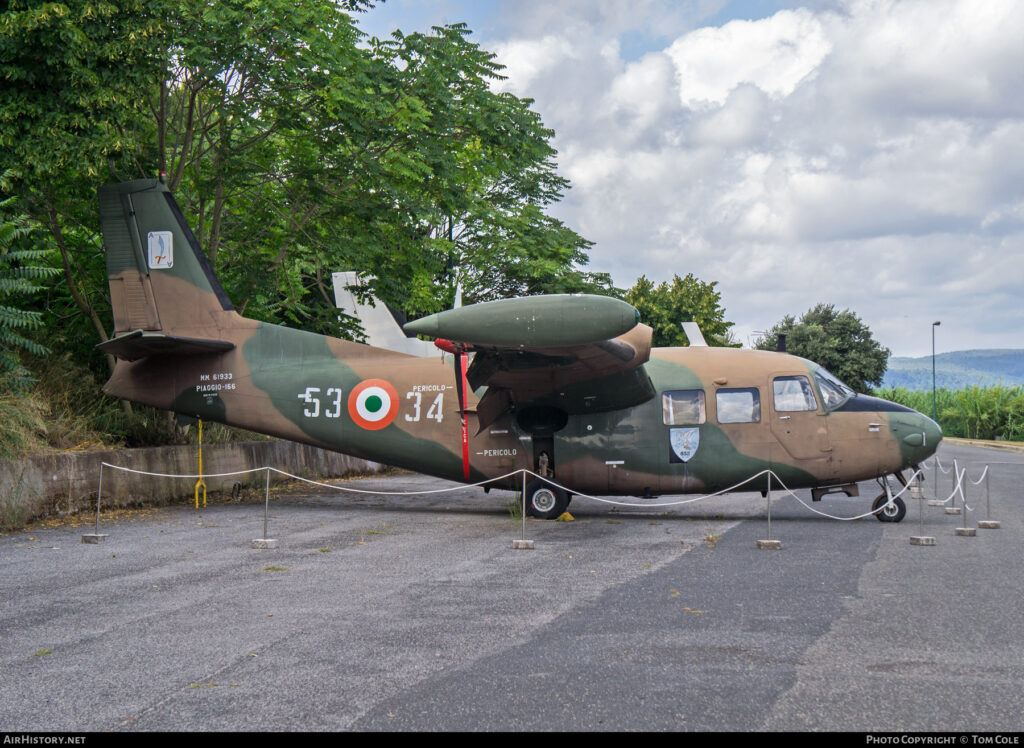
P-166M (Cons# 443) In service with the AMI as MM61933 seen here preserved at LIRB. Photo: Tom Cole via airhistory.net
The P-166’s adaptability also attracted international interest, particularly from the South African Air Force (SAAF). During the 1960s, the SAAF was in need of a medium-range maritime patrol aircraft to complement their long-range Avro Shackleton aircraft. Due to international arms embargoes against South Africa, acquiring new aircraft was challenging. However, in a covert deal with Piaggio, the P-166S “Albatross” was developed. This variant featured a larger radar housed in an extended nose section and modified wingtip tanks to carry more fuel, extending the aircraft’s range. The P-166S became a vital asset for the SAAF, with 20 units produced in Italy and then shipped to Cape Town where they were assembled in secrecy at Ysterplaat Air Force Base.
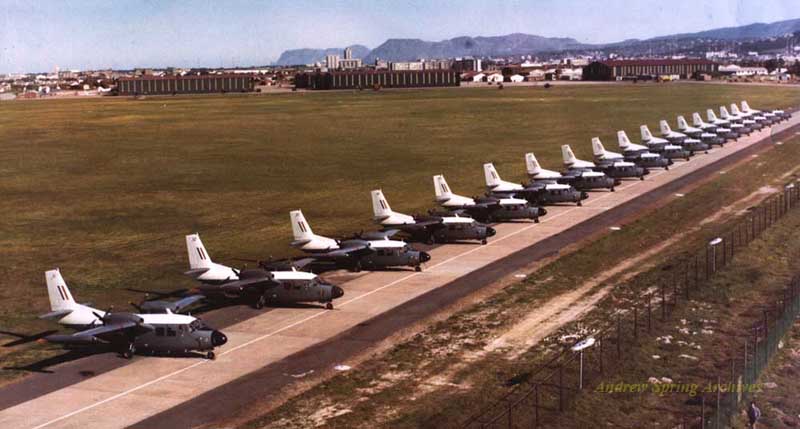
An impressive line up of 18 SAAF P-166 Albatross aircraft.
Another notable variant was the P-166DL3, a light utility transport version powered by 600 hp Lycoming LTP101-600 turboprop engines. This variant served various roles, including photo survey and maritime patrol.
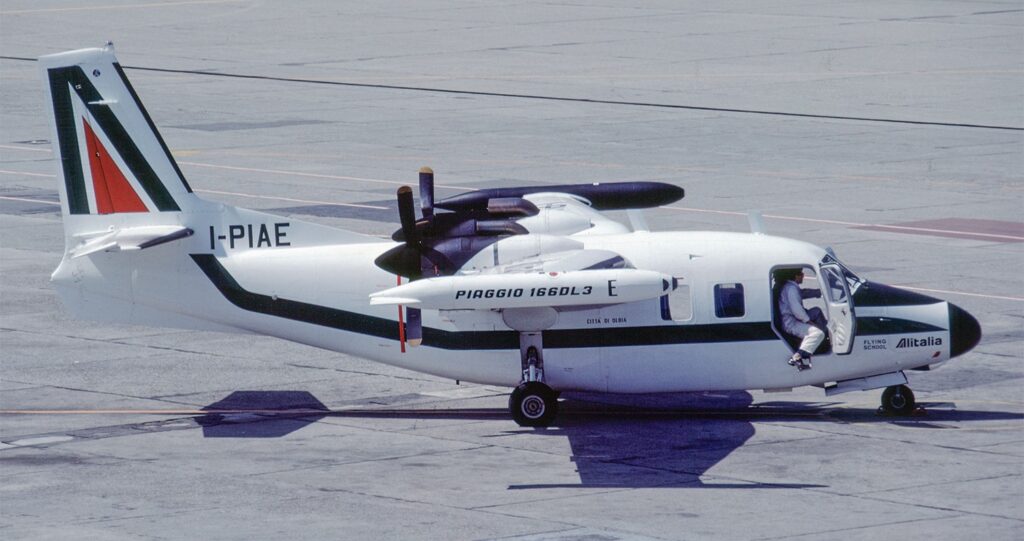
P-166 DL3 (Con# 446) Seen here in Alitalia colours. The aircraft flew in these colours as a demonstrator. Piaggio tried to raise interest of Alitalia in the P-166 as a feeder aircraft for short haul routes. Photo: Photographer unknown.
The P-166DL3/SEM version, designed for maritime and ecological surveillance, was used by the Italian Coast Guard and Guardia di Finanza, with 22 aircraft built for these roles.
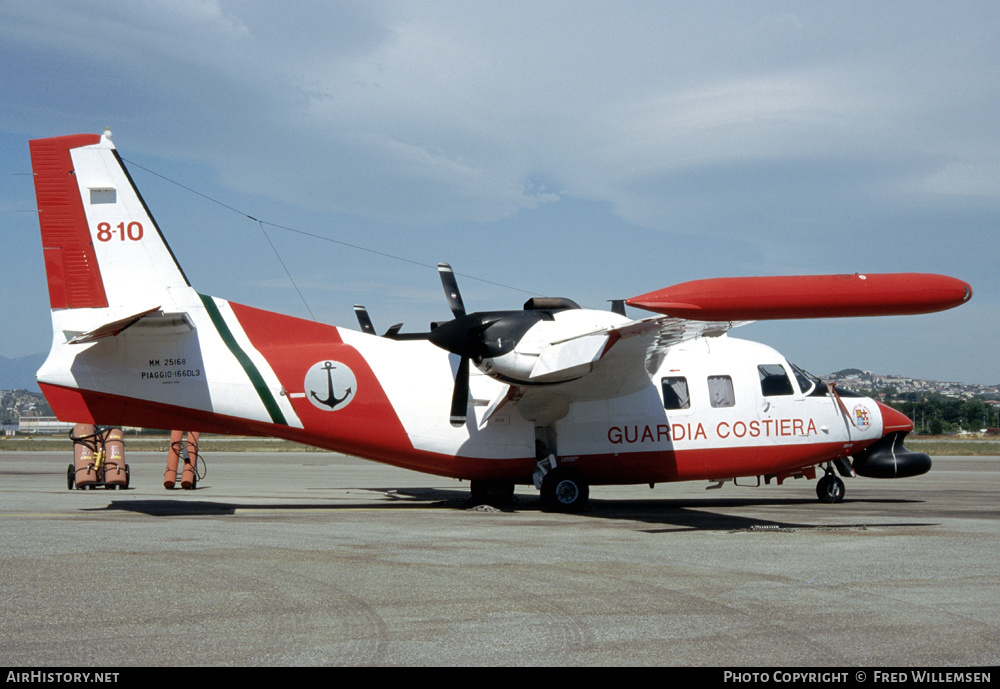
P-166 DL3/SEM ( Cons# 490 ) In service of the Guardia Costiera. Photo: Fred Willemsen via airhistory.net
The P-166DP1 was a further evolution, featuring re-engined versions with 615
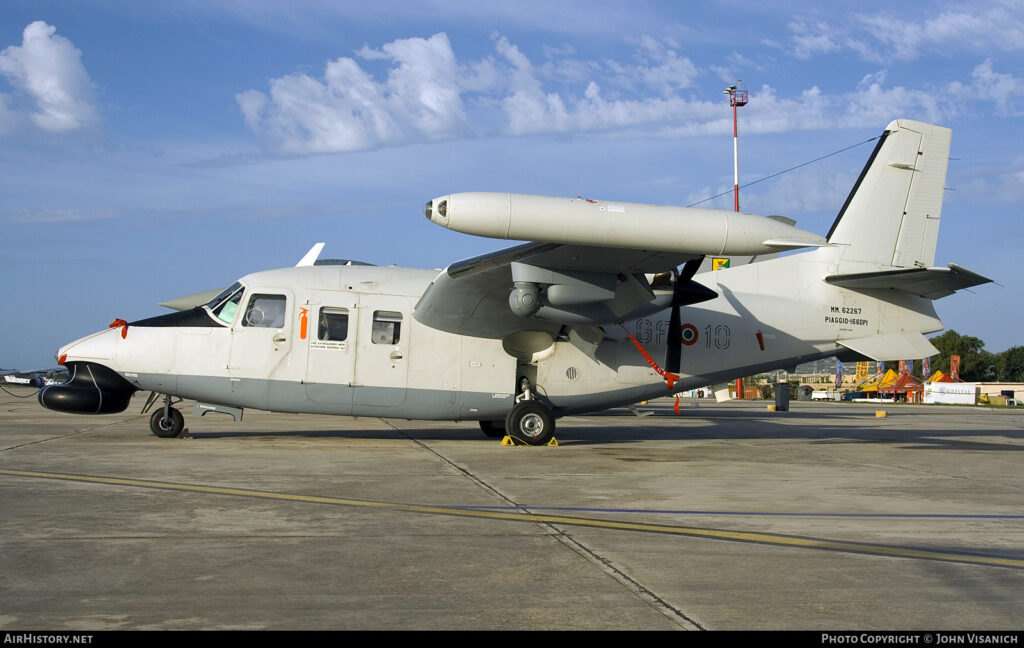
P-166 DP-1 . There were 8 DP1’s built, two were converted DL3’s and 6 were converted DL3/SEM’s. Photo: John Visanich via airhistory.net
hp Pratt & Whitney PT6A-121 turboprops. Eight P-166DP1s were converted from existing DL3 and DL3/SEM models for the Guardia di Finanza.
Operational Legacy
The Piaggio P-166 series, with its numerous variants, became known for its reliability, versatility, and capability to operate in a variety of challenging environments. Whether serving in military logistics, maritime patrol, or civilian transport, the P-166 proved to be a highly adaptable aircraft. Its robust design and ability to take off and land on rough airstrips made it a favorite in regions like Australia, where it was particularly valued for transport between remote and rugged locations.
From its origins as a light utility aircraft to its specialized roles in surveillance and maritime patrol, the P-166 has left an indelible mark on aviation history, showcasing Italian innovation and the ability to adapt to diverse operational needs.
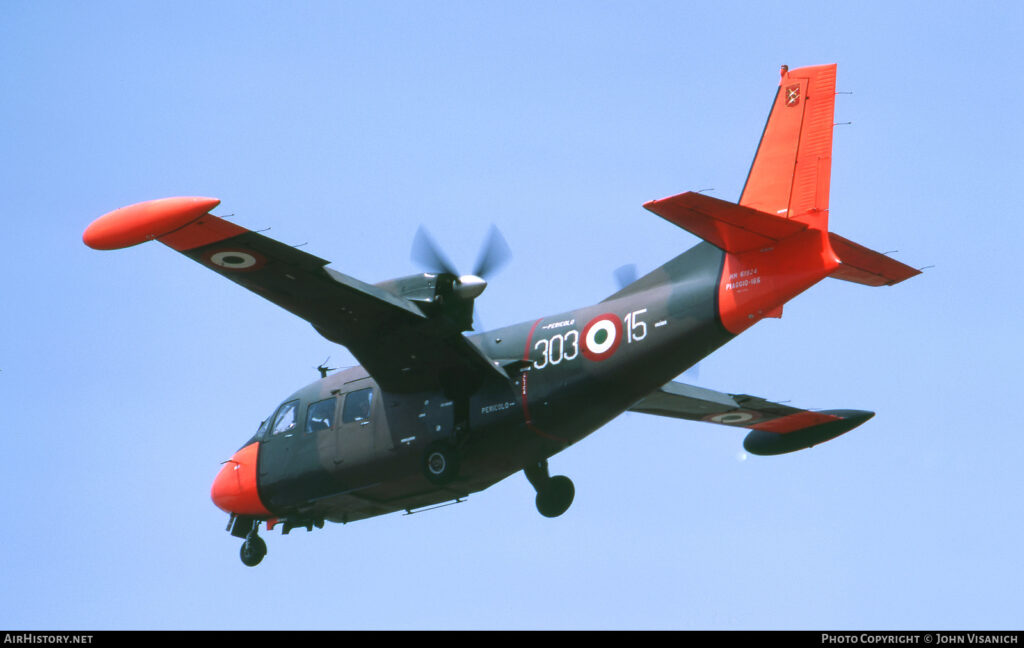
P-166 D (Cons# 434) In service with the AMI as MM61924. Photo: John Visanich via airhistory.net